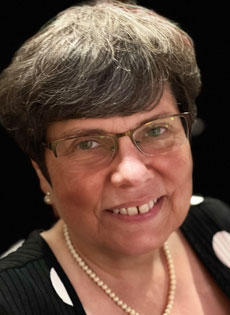
But thanks to hard work, staunch faith of many people, historic pilgrimage took place
In Cuba, 'No es facil'
Friday, March 30, 2012
Ana Rodriguez Soto
XXXX_Nav_Cuba2012_XXXX
MIAMI — Three-hundred pilgrims, 300 stories: During our three days in Cuba, over lunches and dinners, during bus rides and walking tours, I got to hear many of them. Stories of how and why they came. Stories of what they experienced.
Stories, sometimes, with more questions than answers — but stories that nevertheless captured the pain and hope, the wonder and curiosity, of those who accompanied Archbishop Thomas Wenski March 26-29 on the Archdiocese of Miami pilgrimage to Cuba.
I had hoped to share their stories on-the-go, posting daily blogs on the Archdiocese of Miami website. As they say in Cuba, however, “No es facil.” (It’s not easy).
Our travel pace was fast, with few moments of rest between events — and Cuba’s Internet is limited, to say the least. Wi-Fi was available in the hotel, at 14 Cuban pesos (CUCs, their convertible currency) per two-hour span. But it was accessible only from the lobby, not in most rooms. Most of our days ended around midnight and began before 7 a.m. — beginning with our first, long travel day, which began with a 6 a.m. check-in at Miami International Airport and ended with 2 a.m. arrival at our Havana hotels.
I had obtained permission to work in Cuba as a reporter. But when we stopped at the Santiago press center to pick up our credentials, we were told they were waiting for us in Havana — and would cost 100 pesos apiece. Even if we had had the cash — American credit cards and ATM cards don’t function in Cuba — I would have had to skip events to get to the Hotel Nacional, file my stories and post my pictures.
No es facil.
That does not mean the Cuban people we encountered were not helpful. They were. At no time did I feel watched or threatened. In fact, they tried their best to help. But bureaucracies don’t move fast and leave little room for flexibility. I’m not sure it would be any different in the U.S. — aside from the 21st century conveniences of smart phones and instant communications.
Because of all that, my hat is off to the people who worked so incredibly hard to organize this historic pilgrimage:
• Vivian Mannerud, president and founder of Airline Brokers, whose staff arranged for nine buses, drivers and tour guides throughout our four-day stay, as well as the two charter flights that took us to Santiago the first day, returned empty to Miami, and picked us up again that night to fly us to Havana — this time, with our checked baggage on board.
“I was born in Brooklyn but I was baptized in El Cobre,” Mannerud told the pilgrims during our pre-flight meeting March 24 at the archdiocesan Pastoral Center. “So this is going to be very special for me.”
Her company specializes in travel to Cuba, a business overseen by seven different federal agencies, she said, not to mention their counterparts in Cuba.
No es facil. But Mannerud and her staff pulled it off and accompanied us at every moment of the pilgrimage, getting us into places, such as Our Lady of Charity’s shrine at El Cobre, where we never thought we could go. On the way back from the shrine to Antonio Maceo Plaza in Santiago, where Pope Benedict XVI celebrated his first Mass in Cuba, our buses literally traveled the papal route just a few hours ahead of him, so the pilgrims got to experience what only popes and presidents do: rows of people lined three-deep waving flags and cheering as we passed.
• Father Richard Vigoa, Archbishop Wenski’s priest-secretary, and his two overwhelmed and overworked but ever-patient and kind volunteers, Aileem Acosta and Leysi Lorenzo. In the two months between the pilgrimage announcement and the airplanes taking off, they answered endless phone calls and repeatedly helped pilgrims fill out reams of paperwork.
No es facil. But their kindness and patience certainly made it easier.
• Finally, Rolando “Piro” Suarez and his wife, Alina, who work for the Cuban Church in Havana. Most of the pilgrims don’t know “Piro” and Alina, but as the Cuban bishops’ legal advisor, “Piro” is the fixer, negotiator, and go-between the Church and government, and Alina is his faithful helper.
“Piro” was in El Cobre when we got there. Alina met us outside the cathedral of Havana, and I saw both again after the papal Mass in Jose Marti Plaza. “Anything you ever need,” she said, “just let me know. That’s why we’re here.”
If anyone knows that in Cuba “no es facil,” the Suarezes know. They are just the tip of the iceberg of Cuban Catholics who stuck by their faith and their Church during times of extreme isolation and outright persecution. Their staunch faith, iron-clad commitment and years of hard work have earned the Church on the island its hard-won spaces in civil society, spaces that have brought two popes to the communist nation in a span of 14 years.
No es facil. But with God on your side, nothing is impossible.
Click on the links above to read a few of those 300 stories of the people who went on a pilgrimage of charity, a pilgrimage of hope, to a land where faith never died. Slideshows will accompany them shortly. And all the pictures will be available for viewing and purchasing next week at www.dotphoto.com.


Comments from readers